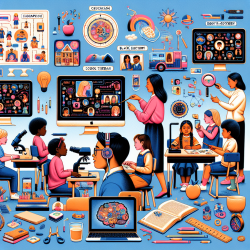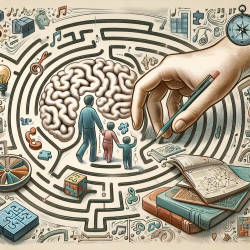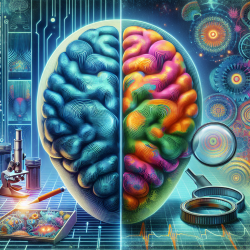As a Special Education Director, you are constantly seeking innovative ways to improve the quality of education and therapy services for students with disabilities. The recent executive summary of the National Institutes of Health (NIH) conference, titled Rehabilitation Research at the National Institutes of Health: Moving the Field Forward, provides groundbreaking insights that can significantly enhance rehabilitation practices. Here are five key takeaways from the research that can help you and your team at TinyEYE implement effective rehabilitation strategies.
1. Integrated Care Models
The conference emphasized the importance of moving away from isolated, "one-and-done" models of care. Instead, integrating rehabilitation interventions into mainstream healthcare can provide continuous support for patients. This approach is particularly beneficial for managing chronic illnesses and pediatric rehabilitation. For example, integrating cancer care with telecare for pain and depression management can proactively address cancer-related disabilities.
2. Technology in Rehabilitation
Advancements in engineering and computing are revolutionizing rehabilitation. From assistive devices and rehabilitation robotics to implanted neuroprostheses and virtual reality environments, technology is making it easier to monitor and improve patient outcomes. TinyEYE can leverage these innovations to offer more personalized and effective online therapy services.
3. Mechanisms and Markers of Activity and Function
Understanding the underlying mechanisms of rehabilitation interventions is crucial for optimizing their effectiveness. The research highlighted the need for better monitoring tools and a focus on neurological and skeletal muscle plasticity. This knowledge can help TinyEYE develop targeted interventions that ensure more normal physiological function over time.
4. Access to the Lived Environment
Assistive technologies (ATs) are essential for providing functional independence in daily life. Participatory action research, which involves individuals with disabilities in all stages of hypothesis testing and analysis, is critical for ensuring the utility of ATs. TinyEYE can incorporate these findings to enhance the design and implementation of their online therapy tools, making them more user-friendly and effective.
5. Data-Driven Discovery
The use of big data and sophisticated analytics is transforming rehabilitation research. By integrating data from wearable sensors, electronic health records, and large administrative databases, researchers can gain new insights into patient outcomes and treatment effectiveness. TinyEYE can adopt these data-driven approaches to continually refine and improve their therapy services.
Implementing these insights from the NIH research can help you and your team at TinyEYE stay at the forefront of rehabilitation science, offering cutting-edge services that make a real difference in the lives of students with disabilities.
To read the original research paper, please follow this link: Rehabilitation Research at the National Institutes of Health: Moving the Field Forward (Executive Summary).










